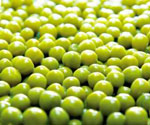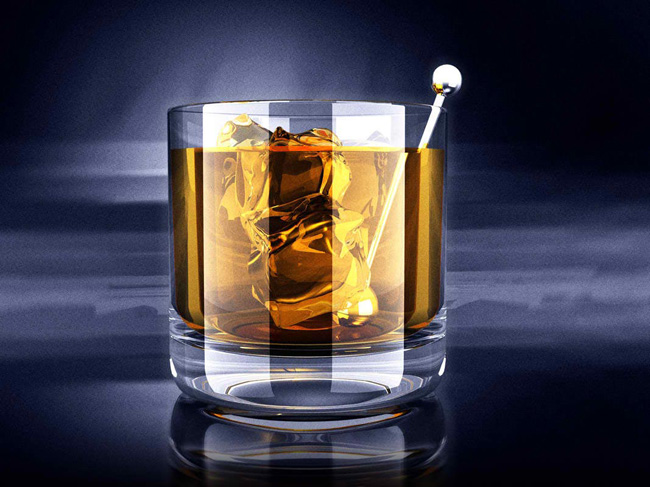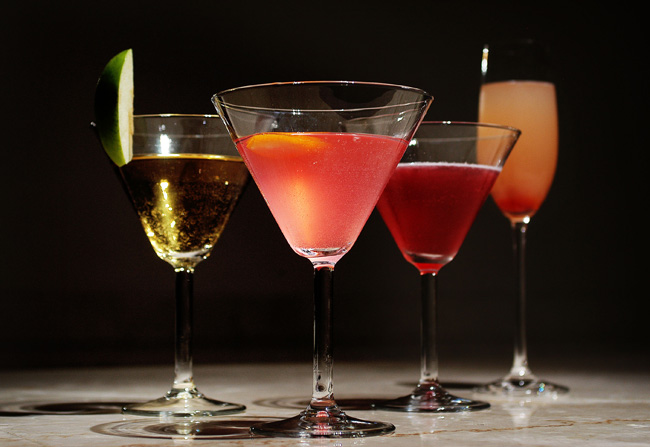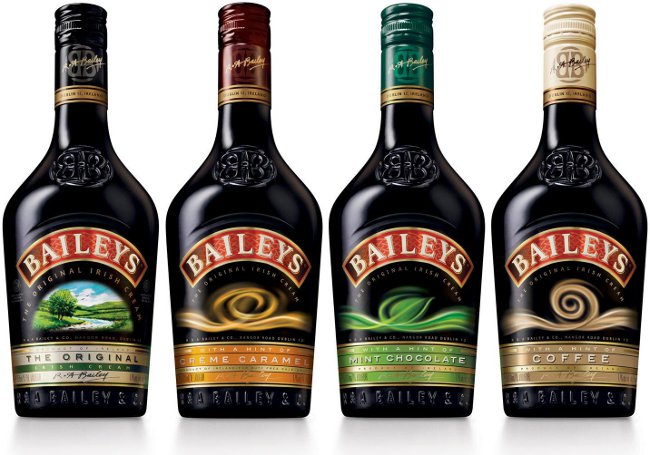With what you should drink tea
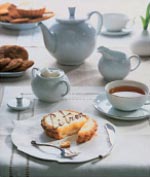 How, after all, is it right to drink tea in order to get the maximum pleasure and benefit from it? Here, of course, can not be approached only from the standpoint of individual nations, because habits are very relative.
How, after all, is it right to drink tea in order to get the maximum pleasure and benefit from it? Here, of course, can not be approached only from the standpoint of individual nations, because habits are very relative.
So, in terms of Chinese or the Japanese, who retained the most classical tea-drinking techniques, that is, those accustomed to using tea in their pure form, without any impurities, snacks, etc., all other ways seem barbarous.
Indians willingly mix tea with milk, and also drink tea with lemon and sugar. Tea with lemon is also drunk in Iran and Turkey, biting instead of sugar raisins, figs andalmonds. Do not refuse here to surrender the ready-made tea with ginger, cardamom, buckwheat, scented pepper (a grain to a glass), cinnamon and other spices. AT Arab countries of North Africa drink hot green tea, insisting it along with peppermint and then adding sugar (but not always). Sometimes, like others the peoples of the East, North African Arabs drink green tea with ice and in this case add to it the juices of citrus (lemon, orange, grapefruit).
AT Europe tea is almost everywhere drunk with sugar, but, as a rule, not particularly sweet. Sweets do not use tea at all.
In Russia, due to the fact that tea was not perceived asan independent drink and always prepared with liquid, in the past, even in well-to-do layers, the need was created to "embellish" tea not only with sugar, but with all sorts of confectionery products: syrups, jams, cookies, cakes, butter, bread and butter, as well as sweets, lemon and in some cases with figs, spices and milk. Thus, in Russia all kinds of tea drinking existed in the East and the West, as a result, they created their own national tea-drinking method.
Tea and sugar
Tea and sugar ... These two words, two concepts from the very childhood are perceived by us as inseparable, closely connected, as if only bread and salt. Such they entered our consciousness not only from home life, but also from literature, from folk tales. But are they really meant to be born to each other, as we are accustomed to?
Indeed, the sugar added to tea, especiallyin small doses, improves the taste of tea infusion. On the other hand, too large doses of sugar impair the taste of tea, drown out a specific tea flavor. In addition, studies of German scientists have shown that sugar acts as a absorber of vitamin B1, when we put in the infusion an excessive amountrefined. Therefore, you should get used to drinking tea with very small amounts of sugar or with such sweets as raisins or honey. It is advisable to do this to those who suffer from vitamin B deficiency.1, nervous diseases, especially exhaustionnervous system. As for other sweets, it must be taken into account that they all contain sugar and, in addition, a number of odorous substances, the aroma of which inevitably dampens the natural delicate aroma of tea. That's why you can not get real pleasure from a real, properly prepared tea, eating it at the same time with sweets or other sweets. It is better to drink unsweetened tea with a snack with sweets so that a sip of tea follows after the sweetness is already eaten.
Tea and flour, tea and cereals
It is unlikely that the combination of these words will seemnatural, and, nevertheless, very many drink tea not only with cookies and cakes, but also with bread, sandwiches. But in fact, there is essentially no difference between a glass of flour overfilled in oil, which a resident of Central Asia falls asleep in tea, and an eclair cake, which the visitor of a cafe drinks with tea. And in that, and in another case, tea acts as a conveyor of a flour product in our body. In addition, tea helps digestive organs to digest, digest heavy flour products, and also increases their nutritional value. That is why flour products in combination with tea can be even for a long time an essential food that can maintain the vital functioning of our body in the right tone.
Thus, tea supplements and ennoblesflour products, but they do not "embellish" tea. Moreover, flour products in general reduce the taste, the most attractive properties of tea, not to mention the fact that they kill the fragrance in passing. That's why you should not look at tea as moisture, wetting bread or biscuits. On the contrary, using tea together with flour products or cereals, it is necessary to increase its concentration. Consequently, the peoples of the East, filling tea with flour or squeezing rice with rice, do not accidentally increase the weight of tea (or increase tea drinking up to 5-6 times a day). It turns out that concentrated tea in Tibetan, with overcooked flour, drink much more useful and more correct than regular tea with a cake. When we absorb flour products with a thin tea, we double the negative effect of these products on our body, we load it with carbohydrates, water, create a load on the heart and the whole system of blood circulation, and then ... we blame the harmful effect of tea, which turns out to be completely here with nothing. That's why, if we really want to eat cake or cookies with tea, then we need to drink them with very strong tea.
Tea and milk
Many lovers and connoisseurs of tea aroma andTaste is considered blasphemy mixing of tea with milk and cream, as it is done, for example, in England. From the point of view of a true admirer and connoisseur of tea, the use of tea with milk, and even more so with butter, as is customary for Mongols, is equivalent to spoiling tea, drowning out its bouquet.
Indeed, there is a fundamental difference betweenEnglish and Mongolian way of drinking tea is almost none. In both cases, along with tea, the second obligatory component is not fermented (sweet) dairy products (milk, cream, butter), differing from each other only in different degrees of fat content, and the third component is the additives of substances that impart a drink or sweet (sugar), or bitter-salty (salt, pepper) taste. But it is these "third" substances, and not at all neutral dairy products that fundamentally change the general taste of the drink, come into dispute with the tea aroma and in most cases drown it. Consequently. from the taste point of view, sugar changes to a greater degree, "spoils" the flavor of tea, changes its specificity than, say, milk.
Well, what are the curative, healingproperties of tea from the addition of dairy products? The matter is that milk is a product with the most complicated chemical composition. Milk contains more than 100 different nutrients that a person needs. It is rich in vitamins - up to 20 species, and only 3-4 species pass into the oil during processing, and the rest remain in the waste. A mixture of tea infusion with milk is a highly nutritious, easily absorbed by the human body drink, possessing both stimulating and strengthening qualities. Tea extremely successfully corrects the shortcomings of milk, facilitating the digestibility of its body. At the same time, milk softens the effect of caffeine and other alkaloids, while the tannin contained in tea makes the gastric mucosa less susceptible to negative phenomena of fermentation of whole milk. So tea helps milk, and milk - tea.
With milk you can use all kinds of tea,especially black and green, both baihovye and pressed. Especially good with milk are green, astringent teas mixed with black. It is best to use in the mixture with tea, not boiled, but raw pasteurized milk, heated to 40-60 aboutC, or powdered milk powder, which does not have extraneous smells of utensils and is not devoid of vitamins during the boiling process.
Tea with milk is a good preventative. Especially useful is this drink in diseases of the kidneys, the heart, and also as a strengthening agent for dystrophy, depletion of the central nervous system and polyneuritis. But even for a completely healthy person, a strong, fragrant tea with milk is an excellent drink, especially in the morning or after overexertion.
Tea and fruit
Sometimes fruit is added to tea for medicinal purposes. Tea in this case can serve either as a "conveyor" of a number of acids (lemon, apple, ascorbic), capable in a pure form to cause irritation of the mucous membranes of digestive organs, or play the role of an enhancer of the properties of certain fruits. For example, in a number of diseases it is recommended to enter into the diet products containing pectins. These products include apples. At the same time pectins contain also teas. Therefore it is very advisable in such cases to combine tea with apples, cutting them into slices directly into a ready hot tea drink.
Tea and lemon
Most often tea is consumed with lemon and less often with other citrus fruits (for example, in Japan with pomegranate, in Arab countries and in America with grapefruit).
Mixing tea with lemon in one dish is ourinvention. It is original and unique. original and pleasant to taste, unique - by composition. The fact is that until the 80s of the XIX century, it never occurred to anyone anywhere in the world to combine tea and lemon in one dish-drink. Why? First, for reasons of a purely geographical nature, that is, because a lemon with tea was impossible to meet. Where lemons are widely known, where they grow and where they grow, as the main cash crop, tea does not grow. In those countries it was only unknown before, but we do not use it until now, because these are the countries of traditional winemaking with a wide, everyday consumption of wine as a regular table drink, as well as the country of the "coffee" zone, where the usual afternoon or morning non-alcoholic drink since the Middle Ages serves coffee.
Secondly, there were also serious culinary reasons,on which in lemon countries no one could come up with a lemon-and-tea composition. The fact is that in the Mediterranean the lemon has been from time immemorial, that is, since the times of Ancient Rome it has been considered as a seasoning for fish, for fish dishes, as a component of various dressings and sauces, which increased the "piquancy" of their game and poultry dishes, and, finally , as an acidifying additive to sweet dishes made from non-acid fruits. Thus, the sphere of culinary use of lemon was strictly defined and traditionally maintained, observed, not allowing even the thought of some other application of it.
In Russia they did not know either lemon or tea, people wereare completely free from the bonds of centuries-old culinary traditions associated with these food objects. And since both the lemon and the tea were of "Eastern" origin, as they were then said and believed, not very much understanding foreign geography, their combination and unification in one "dish" for Russian people seemed logical, natural and not at all " shocking, "and, on the contrary, in Russian prestigious: and his tea, and lemon, and sugar - all the grounds in it! And it turned out great!
What happens when you combine tea with lemon(or other citrus), if we consider this from a modern scientific point of view? Why is this combination fixed not only as tasty, but also necessary, obligatory? The fact is that in combination with citrus, the nutritive, healing properties of the tea drink are enhanced: it better restores lost strength, quenches thirst. That is why tea is now drunk on the Russian pattern with citrus fruits mainly in hot countries - India, Egypt, Iran, Turkey, Florida and California. But the taste of tea with lemon changes, the aroma of tea disappears. Therefore, one who wants to feel the true taste of a particular type of tea, of course, should not confuse it with anything, including a lemon.

